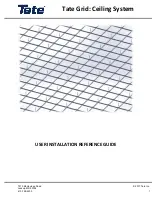
RE 51150-B/07.11 | Drive modules
Bosch Rexroth AG
51/
56
Troubleshooting
Troubleshooting
15
Successful troubleshooting within a drive module requires precise knowledge of
the set-up and the mode of operation of the individual components. The combina-
tion of hydraulic and electrical systems and electronics makes the troubleshooting
even more complex.
For effective troubleshooting, the circuit diagrams (hydraulic and electrical, if
applicable), parts lists, any functional diagrams and other documents must be
available.
How to proceed for troubleshooting
15.1
Always work systematically and focused, even when under time pressure.
f
Random and imprudent disassembly and readjustment of settings can, in the
worst-case scenario, result in the inability to determine the original cause of
the fault.
First get a general idea of how your drive module works in conjunction with the
f
overall system.
Try to establish whether the drive module was working properly in conjunction
f
with the entire system before the problem first occurred.
Try to determine any changes of the overall system in which the drive module
f
is integrated:
•
Were there any changes to the drive module's operating conditions or operat-
ing range?
Were there any changes (e.g. retrofitting) or repair works on the entire system
•
(machine/system, electrics, control) or on the drive module?
If so: What were they?
•
Was the drive module or machine used as intended?
•
How did the fault become apparent?
•
Try to get a clear idea of the cause of the fault.
f
Ask the direct (machine) operator.
f
Overview of the impact of defects
15.1.1
The following tables contain errors/faults and their consequences, the causes
of which are not exclusively attributable to the drive module. The listed error
sources, possible causes and remedies refer exclusively to the drive module. You
will also frequently have to look at the control system or connection technology
when seeking the causes of faults.
The following list is meant as an aid, but does not claim to be comprehensive.
Tabular classification of the impact of defects:
"A" Excessive / abnormal noises
"B" Insufficient power / torque / pressure in the drives
"C" Irregular drive movements (pressure and volume fluctuations)
"D" Operating or oil temperature too high
"E" Polluted hydraulic fluid
Control questions






































